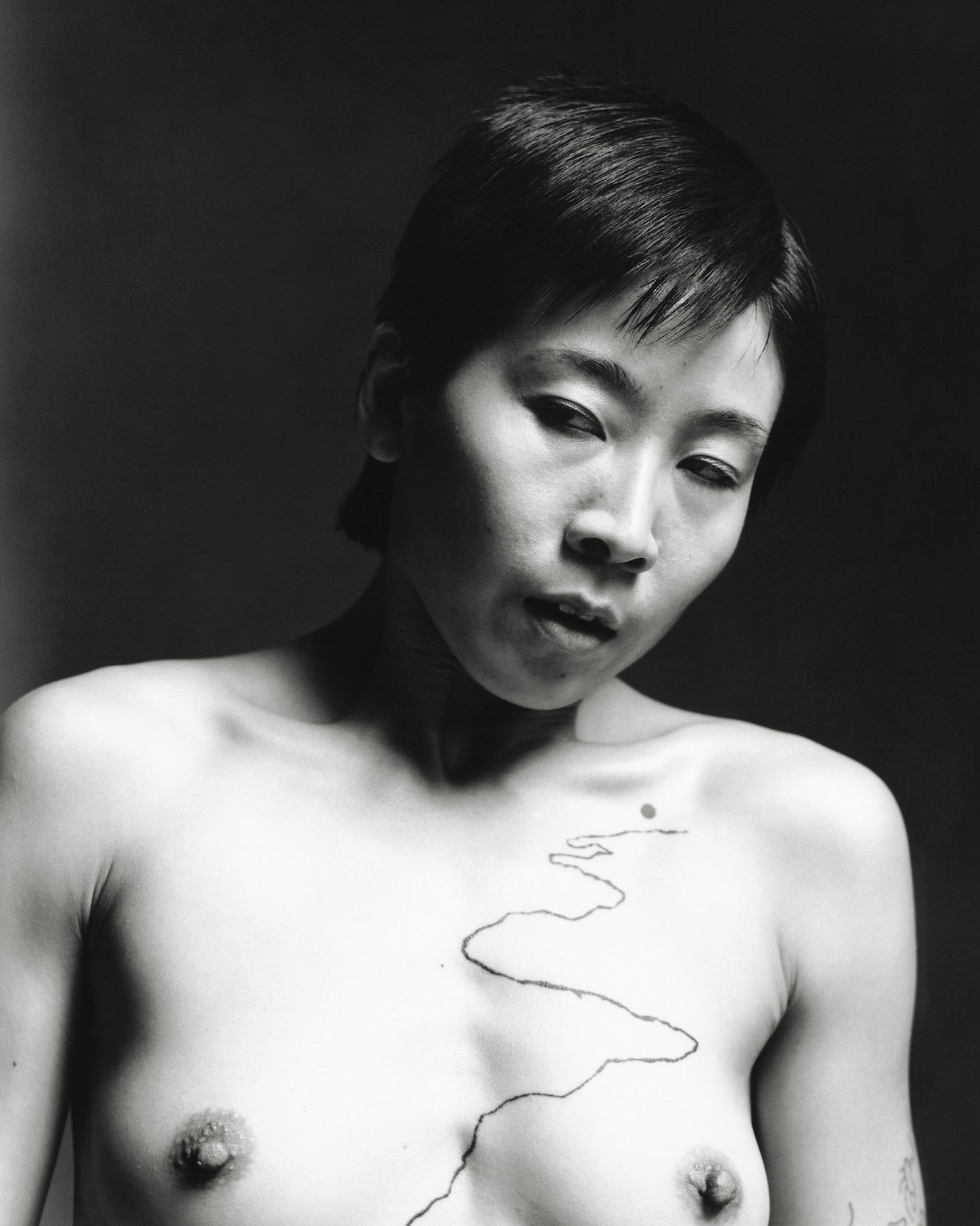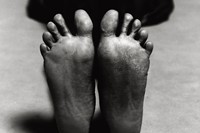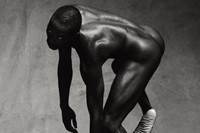Under the influence of French philosopher Simone Weil and inspired by the “chaos and uncertainty” of the times we live in, Dominican-American artist Luis Alberto Rodriguez presents O, his powerful new book of studio nudes. Allowing the bodies to choreograph themselves, Rodriguez captures a cast of varied shapes, ages and identities jumping, crumbling and falling in collapse, all seemingly oscillating between power and a loss of control.
Coinciding with the launch of O, Rodriguez discusses his golden rule of “not shying away from drama” and this latest portrait series representing “the collapse of the world”.
Hynam Kendall: This project has been two and a half years in the making, starting in the time of Covid and political unrest. How did that inform the series?
Luis Alberto Rodriguez: Right, it was the pandemic – but this is by no means a Covid project. My parents were in New York and I was in Berlin, unable to travel to see them. I had a lot of tension about that – it was doomsday everywhere, every day. I started taking pictures of my friends on the empty streets, mummifying their bodies with all these overwhelming headlines about the world at that moment. The feeling was this complete lack of clarity.
Sometime later, my friend [the Norwegian saxophonist] Bendik Giske asked me to shoot his album cover. He wanted to be naked and I had this vision of it being only him and a white wall and a grey floor. In the image, he’s falling backwards and I catch him right before he lands. When he plays, he does these really long notes, which require a lot of power, a lot of air, and I wanted to show the physical effort in his body. A friend commented ‘it’s like he’s stuck between two realms, grounded on earth and pulled towards heaven’, which I loved. This feeling of a lack of clarity and this idea of transcending really sparked something in me, like we’re trying to escape the time we are living in right now – the chaos, the uncertainty.
HK: You ended up shooting a cast of over 60 people. How did you select them?
LAR: Through friends, most of it was word of mouth. I would shoot one person and then they would recommend someone else. It became this chain gang; even though many didn’t know each other, they were connected. My first subject was a woman covered in tattoos. I shot her laying on the floor as though she had landed from a great height, fallen from the sky. She doesn’t look dead, but it encapsulated a feeling I had about death. It’s macabre. She looked like a mass of meat but could be meditating. You don’t know, though, because you don’t see her head.
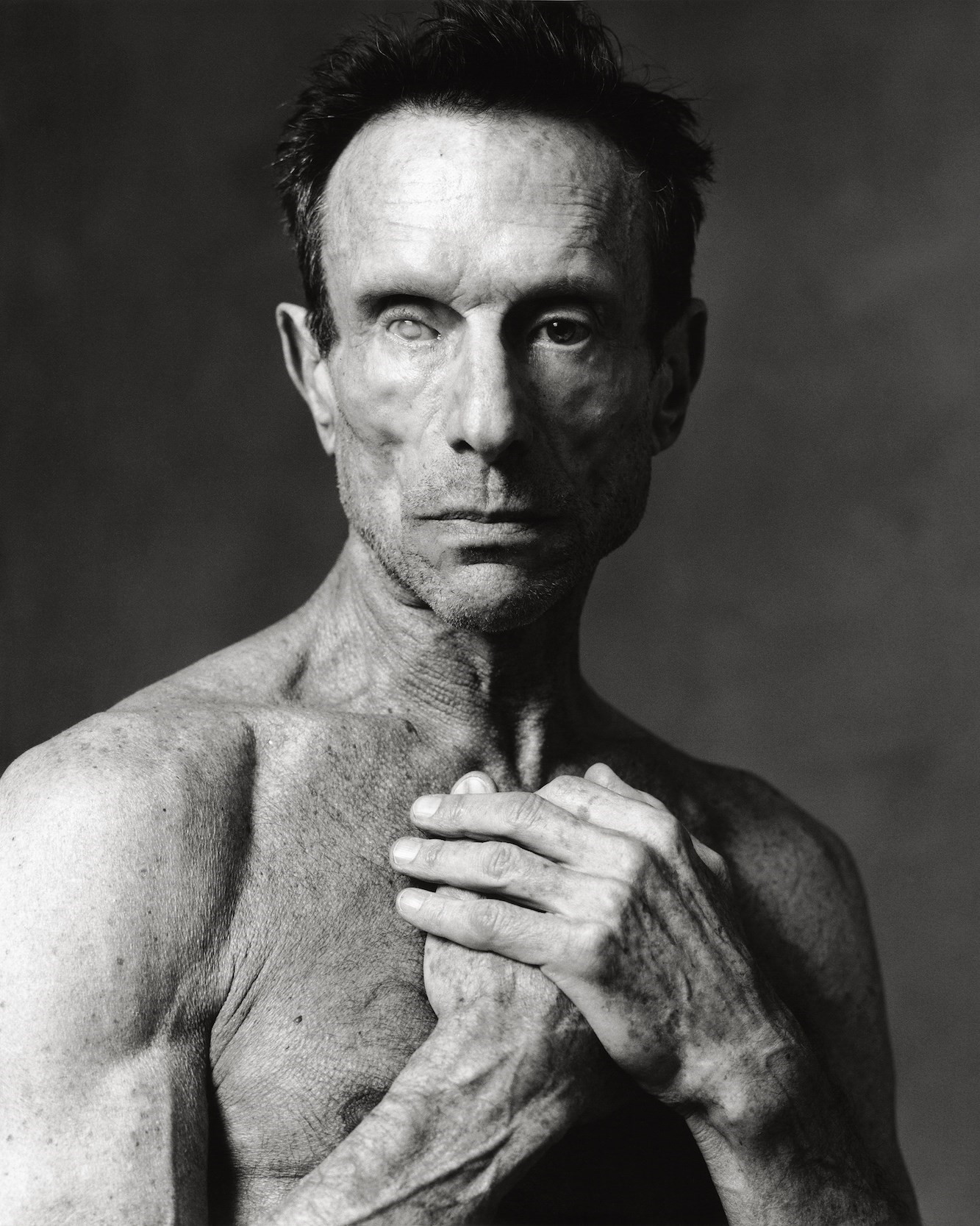

HK: Why did you frame this, and a number of your other portraits with their faces unseen or turning away?
LAR: In the beginning, I was thinking more about abstract, completely anonymous forms, so the first few rounds were shot like this. Then I met this very elegant man at a house party. He’s about 70 and an icon in New York, and was famous on the gay scene in the 1970s and 80s. He lived through a lot, you know? And he’s blind. When we got to my studio, and he undressed, his body, being older, was far more fragile than my previous subjects. He’s looking at me looking at him, he’s staring at me, he’s on his knees, looking up, waiting for my signal and his presence was like an anchor at the bottom of the ocean. Not being able to see, he inhabited this sense of complete listening. From that moment I thought, I can’t hide him. I can’t take away his identity. It was a turning point for me, I realised these portraits are about humanity, humanity in transition.
HK: You have a background in dance and capture these bodies rhythmically. How much is directed, how much is performance?
LAR: I loved that all my subjects had their own way to manoeuvre their bodies – some people collapsing, others on the verge of landing. I let their bodies choreograph themselves. Some bodies willed themselves to change as they fell, others gave in to the collapse. You know, these are not all dancers – I mean, one lady was a gardener. There is no right way to move, every move is a start.
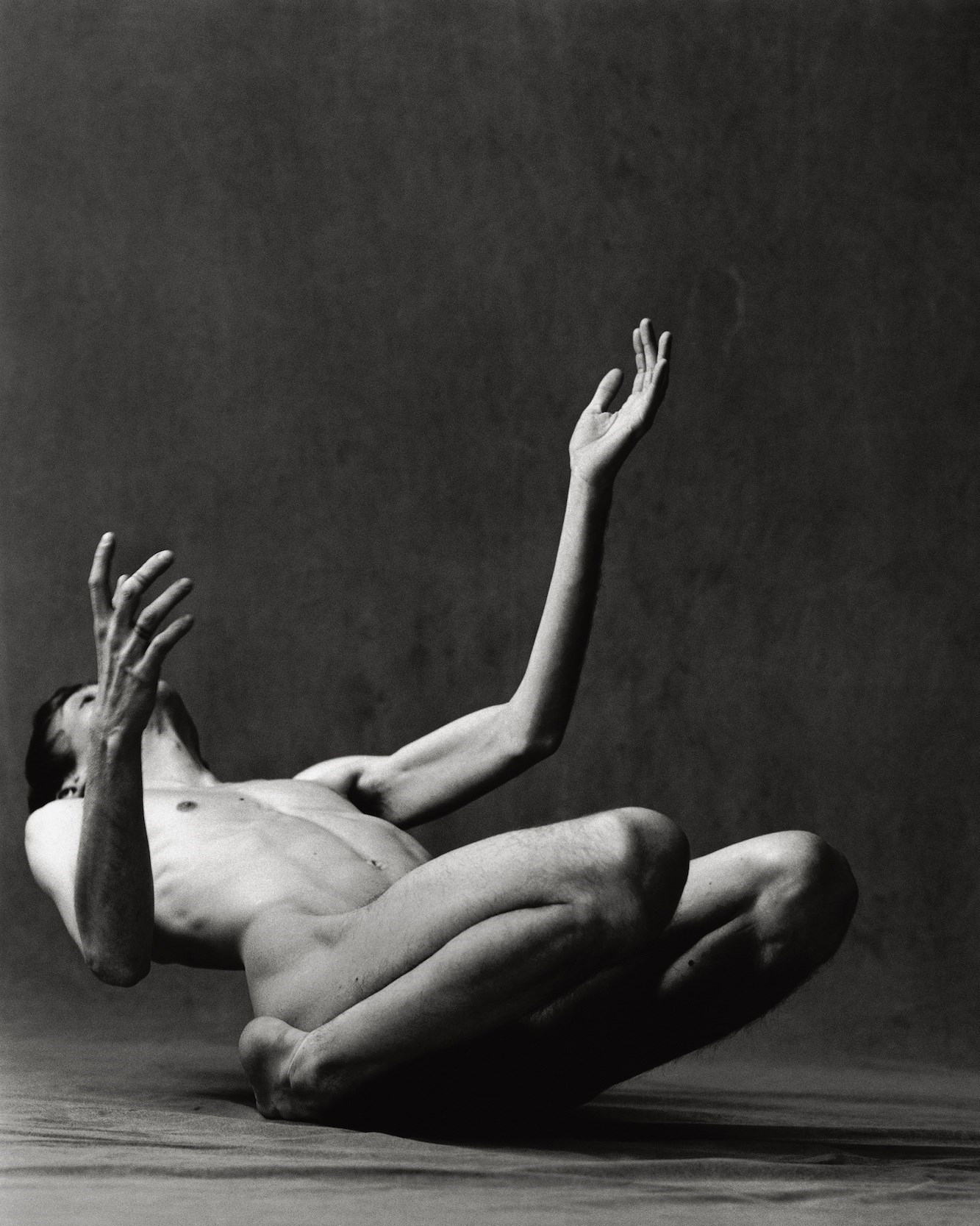
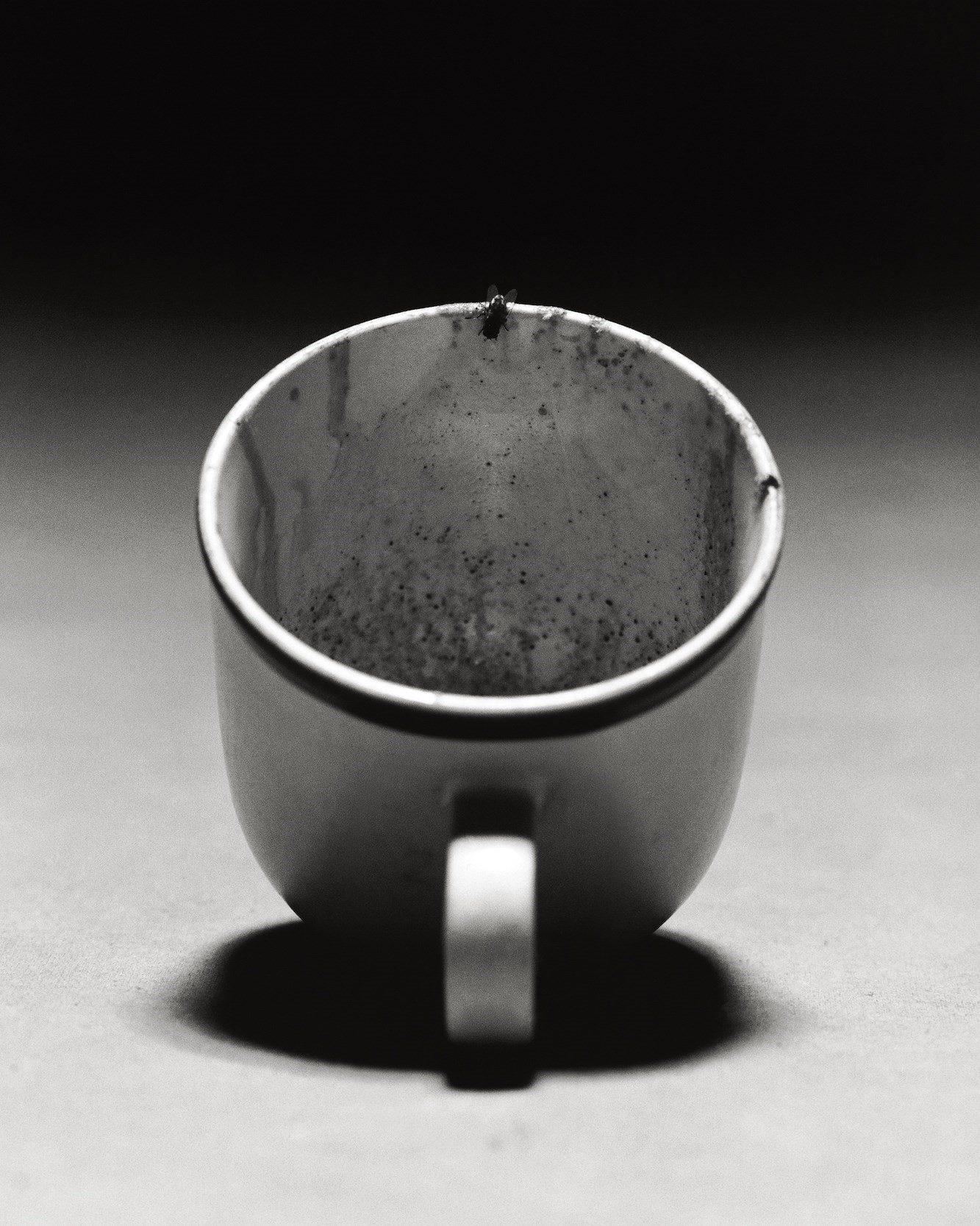
HK: At what point did you decide to shoot, and intersperse objects into the series?
LAR: My mother is from the Caribbean and was kind of notorious for her coffee cup readings. I’m my mother’s only son and she had me young, so we are very close. Being gay, I was worried she would know my business, so I didn’t ever want to read her cups for me. But, in 2017, I finally let her. She turns them upside down and lets the liquid fall, gravity pulls the liquid downwards and it all spreads out into unpredictable pathways. People seek out these readings when they are lost, you know. So these cups serve as a map. And my mind was blown. Not only by how accurate it was but when she was reading the cups for me, I saw how she embodied herself, I saw a confidence in her that I don’t always see in her daily life. I wanted to photograph my mother for this book, but she refused. And honestly, I was relieved, because I also didn’t want to shoot her naked. But I felt the cups gave the presence of my mother.
HK: Was the nakedness an intrinsic part of your vision for this project?
LAR: Yes. I wanted to strip everything away – any and every kind of decoration that we can use to embellish ourselves. I’ve always been interested in this idea of how the body is laboured; how the signs of that labour serve as a map, like the cups. Our skin tells our stories. I read Simone Weil’s book Gravity and Grace, and I loved how she talked about emptying yourself so that there’s no ego left, so that you can give yourself to God. This idea of giving your flesh to the light really inspired me. Nakedness just feels so completely generous. There is no pretence of anything else. There is nothing to hide me. Here is my body, here I am – take it or leave it. I really wanted rawness, so that people could connect to it in that very emotional way. This is not mathematical, it’s guttural and very dramatic. I didn’t want to shy away from the drama. Let me tell you: I want the drama! I am not here to be coy about it. I’m very serious: It is a soap opera. It represents the collapse of the world.
O by Luis Alberto Rodriguez is published by Loose Joints and is out now.
